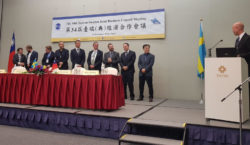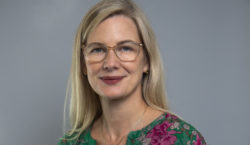‘Capture the growth of the frontier SEA markets’
Swedish companies can, and should, despite expected challenges, invest in the ‘frontier Southeast Asia markets’ – Cambodia, Laos and Myanmar. The business opportunities are there – especially within four sectors that Business Sweden (BuS) has pinpointed in its new ‘point of view’ report.
In its report BuS’ Mekong office shines light on these very much emerging and promising growth markets. It also pinpoints the right way to do it in terms of entering – where of course BuS is there with its know-how, network and expertise consultancy services to help.
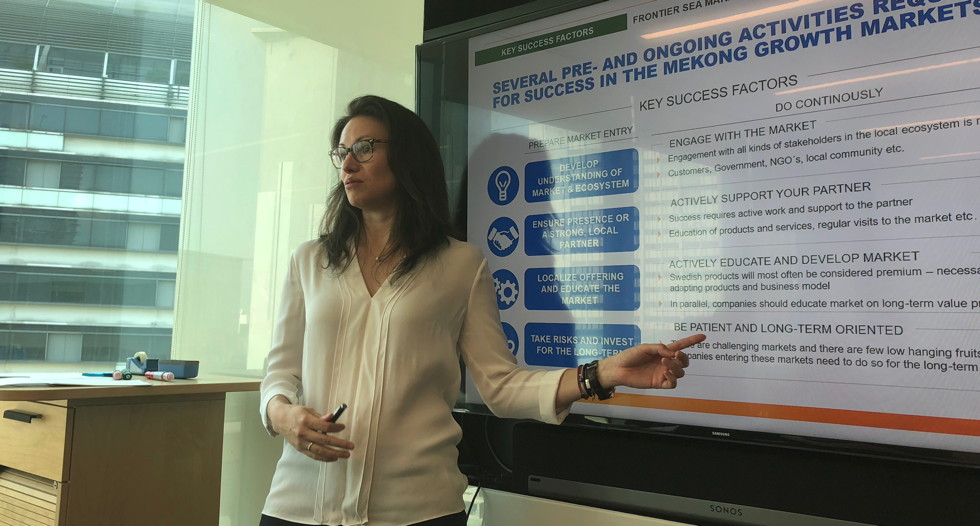
Aside the need for a long-term approach, it also requires stamina to enter these markets. Key challenges in any venture are: corruption, finding the suitable partner (s), finding/recruiting people with right capabilities and infrastructure (transportation, access to electricity etc.)
Vivianne Gillman, Trade Commissioner Vietnam & Thailand, and Vlad Månsson, Project Manager, have presented the report to the business community in both Bangkok and Singapore. They pointed out how Business Sweden helps Swedish companies reaching their full international potential and it is in that setting these growth markets in Southeast Asia is of relevance.
Myanmar, for instance, is as characterized by a large population, high growth and rapid development.
“We all know that Asia is the growth engine of the world and a lot of the Swedish companies are looking east towards Asia for business opportunities and for growth. And on the typical markets one looks at entering, such as China or Thailand, there are great opportunities – but also fierce competition,” started Vivianne Gillman.
“But in that global battle for growth there are some countries usually not looked at, and that actually are some of the fastest growing markets in the world right now. They are also somewhat white spots for many Swedish companies.”
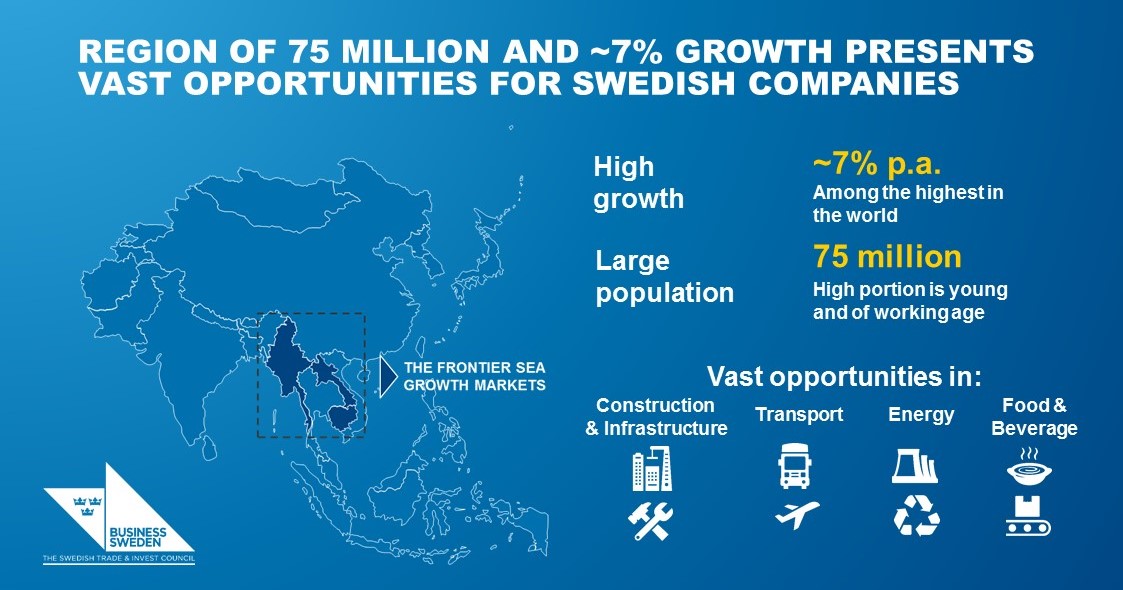
BuS’ research also shows that Sweden is behind European peers in exports and FDI to these SEA frontier markets.
Meanwhile, Swedish industry matches well with the investments going into the Mekong region.
Introducing the markets Vlad said that they have among the fastest growing GDP worldwide. “But one very important factor here is that it comes from a very low level. Even Myanmar with a population of Thailand’s size has just one fifth of the GDP as Thailand. Absolute growth is actually still smaller than Thailand’s.”
“There are many differences between these countries but some things they have in common are a very young population, high growth, very dynamic markets and of course many challenges.”
Their rapid development requires investments and modern solutions. Key characteristics are: enormous needs of infrastructure and construction development; rising middle class: more and more consumers can afford an increased consumption; industrialisation: Shift from basic agriculture to more industrial manufacturing; and complexity in doing business: despite high growth, these markets are still underdeveloped and pose challenges in doing business.
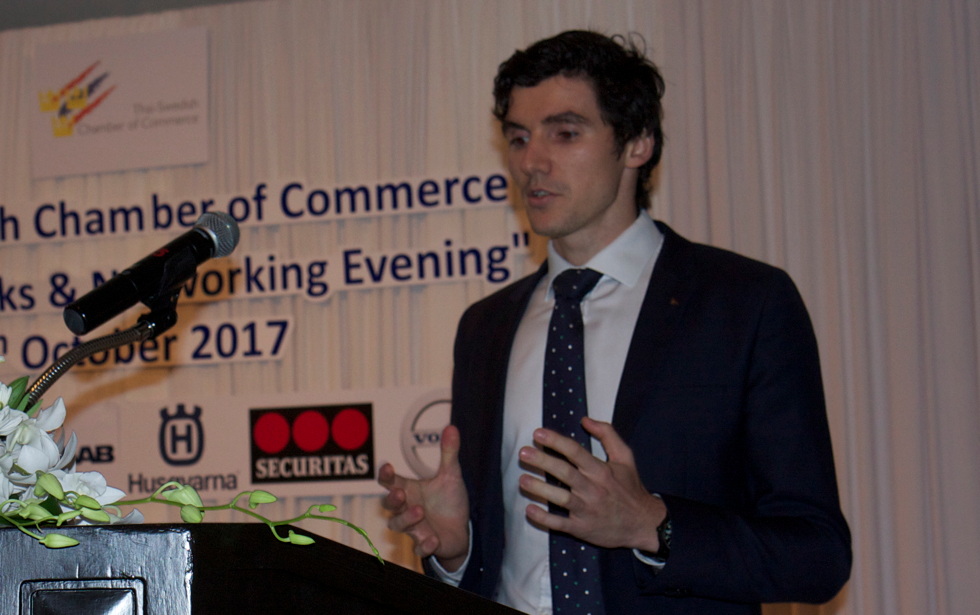
Recently “democratized” Myanmar is undergoing urbanization and shift from agriculture to light manufacturing. It has potential to become a trade hub but lacks the transport infrastructure; roads, ports and airports.
“Unfortunately, we are seeing a lot of troubles politically in Myanmar and could actually see in 2017 some hesitation to enter the market due to this. But we definitely see a lot of industrialisation going on, with investment in oil and gas, the power sector, transportation, and ICT (where penetration is skyrocketing).”
Laos has the smallest economy of the three but has demonstrated high growth in recent years. “In the energy market it’s seen as the battery of the Mekong region. It has an extremely high surplus of energy, partly due to our Nordic neighbours Norway and Denmark investing a lot into the power sector,” said Vivianne.
Major projects in Laos include airports, railways, wind farms and hydro power plants. In Cambodia this also concerns railways, hydropower as well as commercial construction.
Manufacturing (with textiles and clothing dominating the sector) and tourism are its two major economic drivers. Its government has set target of 7,5 million tourists by 2020.
“Cambodia is the market of the three where BuS has seen the least interest among Swedish companies, even though it has a larger economy in size than Laos. In the garment sector, H&M and some others are present,” presented the Trade Commissioner.
BuS’s report identifies the key industries and opportunities in the frontier SEA markets, with large demand for innovative solutions and technologies and high growth.
“FDI is really booming after 2012 and what is driving this are these sectors; construction & infrastructure, transport, energy and food & beverage (F&B). These are also where we see potential for Swedish companies, and that are also leaders in these sectors.”
“There is very poor transport infrastructure in these countries today. And that is where there are large needs and where global funding agencies like ADB and World Bank are funding projects in airports, roads and ports,” continued Vlad.
The booming infrastructure and constant development will require various solutions, where there are opportunities for large and midsized Swedish companies with innovative and efficient infrastructure solutions.
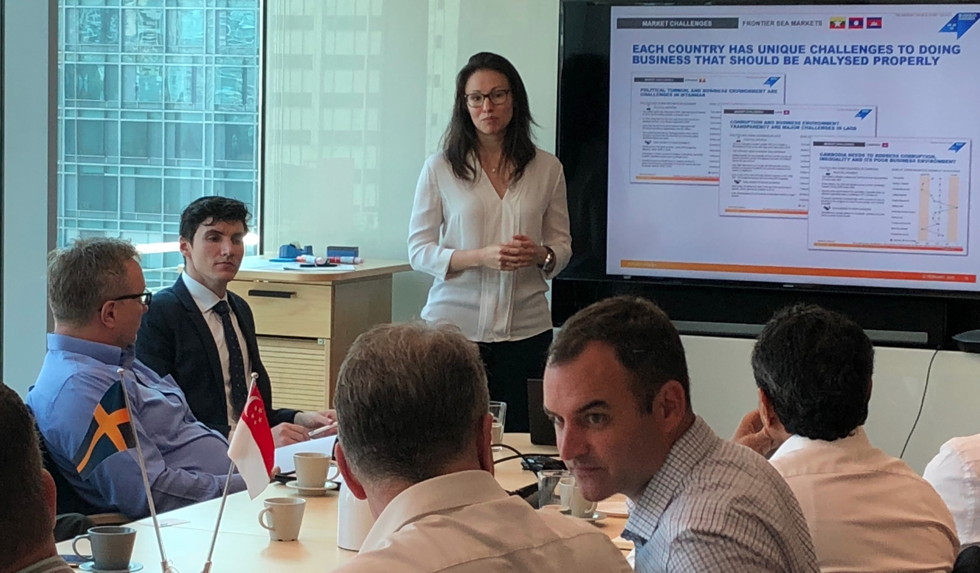
In the transport sector there is high growth across the transport segment, from passenger cars to commercial vehicles. For instance, Laos’ strategic position connecting China to South-east Asia will drive infrastructure and construction, driving demand for heavy trucks and commercial vehicles. And in Cambodia rising disposable incomes will drive dealership expansions and new vehicle sales.
“In the transport sector we can see very big competition from Chinese, Japanese and Korean companies but there are still good opportunities in this sector as well.“
“Companies that could have potential include Volvo and Scania with world class trucks and buses. Volvo Cars is also increasing its presence in these countries. And you have everything around it, such as smart solutions.”
Think digitalization and connectivity solutions, railway equipment and systems, air traffic and maritime management solutions etc.
Within energy understanding the public and private stakeholders is key to success.
The Mekong markets see tremendous need for modern, high quality energy solutions as well as alternative energy solutions.
“Here, ABB is involved in these countries. But we see that there are opportunities for more Swedish companies in this sector for sure.”
F&B is another growth market, where world-leading companies have been present for years and are ramping up investments, with rapid growth expected in the food and beverage industry, especially in Myanmar.
“We believe Swedish companies can follow and track these investments and deliver equipment and solutions for this. Companies like Tetra Pak are already quite big in the region. But there is everything related to food manufacturing. In packaging solutions Sweden is one of the best countries in the world,” said Vivianne.
In the report BuS also give their view and what they think are key success factors to enter these markets. “The first one is to really do your homework and spend the time in understanding the market ecosystem, and work continuously to re-learn and develop the market.”
Second, ensure presence or a strong, local partner is key. “This is probably the most important point; to be on the market. There is no chance you can drive business in Myanmar from Sweden, not even from Thailand.”
In addition one needs to continuously: engage with the market, actively support one’s partner, and be patient and long-term oriented.
“Localise your offering and educate the market. If you are going to sell a product that is five times more expensive than the Chinese you need to educate customers on factors like the benefits and total cost of ownership.”
The report also includes some success cases here that BuS believes represent this learning.

